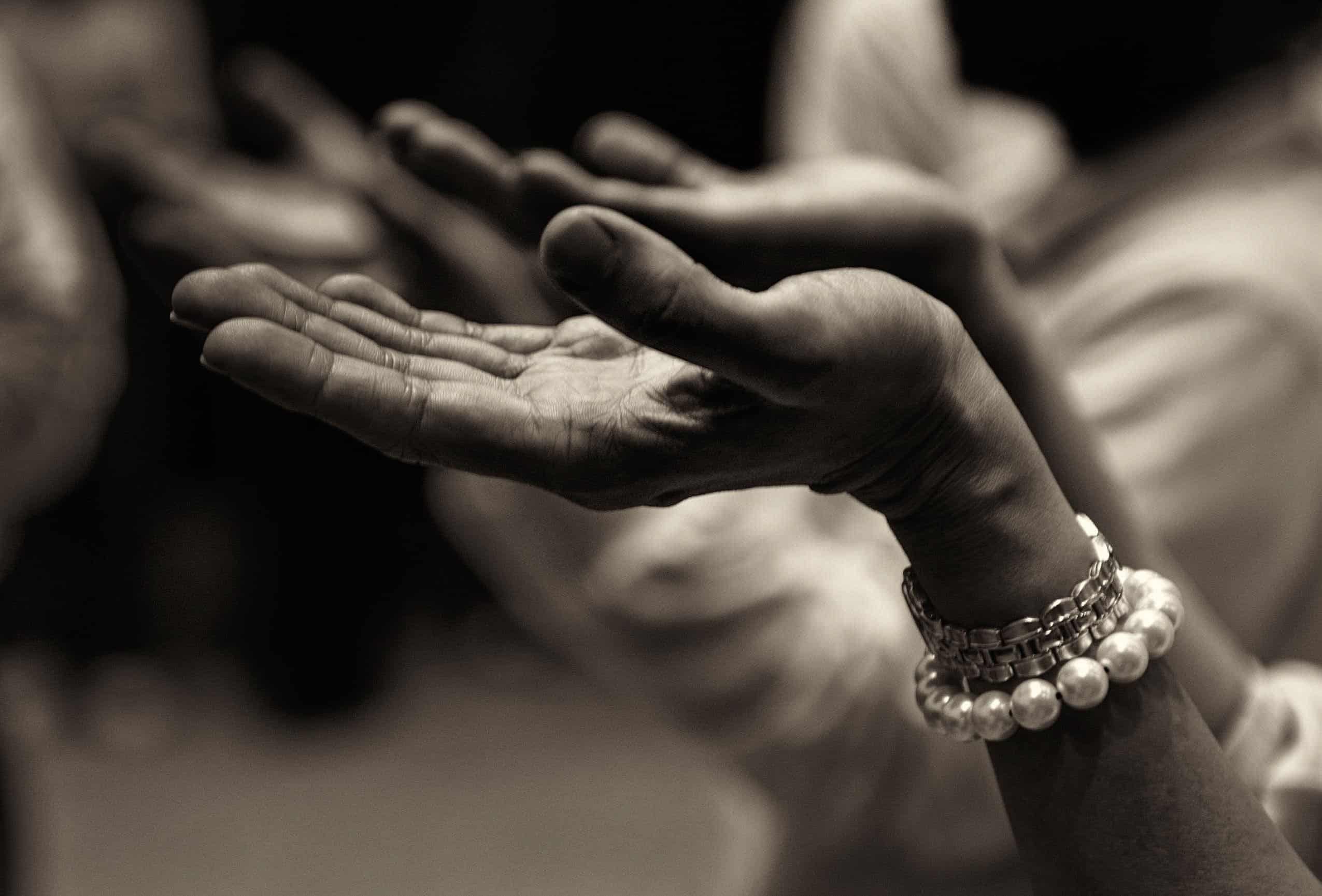“Let us stand and profess our faith.”
Every Sunday at Mass, we stand as a congregation after the homily and recite the words of the Creed. “I believe in one God, the Father almighty…”
What exactly is the Creed? Where did it come from? What are we saying when we recite it? The truth is, the Creed is a huge topic, and many lines in the Creed were the product of tremendous debate and contention. You could take a whole graduate-level class on the contents of the Creed! This article is not going to unpack everything about the Creed. Not even close. This article is an introduction.
What the Creed is NOT.
First things first, let’s dispel some misguided ideas about the Creed. It is not a single, solitary summary of the entirety of the Catholic faith. In fact, it’s not even single. We use two Creeds regularly in the Catholic Church: the Apostle’s Creed and the Nicene Creed. These two Creeds aren’t contradictory, but they include different wording, and the Nicene Creed has more content.
Even the longer of the two, the Nicene Creed, doesn’t include a complete summary of the Catholic faith. For example, the Eucharist is never mentioned. And while the stanza on Jesus talks about his birth and Passion, it gives no mention to his teaching or miracles. What about Mary and the apostles? Barely mentioned. Yet those are all things that “We believe.” So, we can’t say that the Creed is a complete summary of the Catholic faith.
In fact, we also can’t say that the Creed is exclusively Catholic. A variety of Christian churches use the Creed: Lutherans, Anglicans, Methodists, Presbyterians, and more. When we profess belief in the “holy catholic Church” in the Creed, it’s important to note that the word catholic has a lower-case c.1 It means “universal,” not Roman Catholic. There’s even disagreement over what the word “catholic”/universal means in the context of the Creed, but it does point beyond a local church to belonging to something greater.
The last point to clarify is that the Creed is not lifted out of the pages of Scripture. In the Sermon on the Mount, Jesus didn’t address the crowd and say, “Those who want to follow me must believe the following things…” It’s not included among the letters of Paul nor the Acts of Apostles. We did not take the lines directly from any place in Scripture. Now, that’s not to say that the Creed goes against the Scriptures. It is certainly rooted in the Scriptures. But the composition of the Creed came centuries after the life of Jesus and the writing of the Scriptures.
So, you might be asking now, what exactly is the Creed?
What is the Creed?
The word “creed” itself comes from the first word in Latin: credo (“I believe.”). So we can certainly say that the Creed is something which we believe and hold to be true. Here’s how the Catechism of the Catholic Church begins its explanation:
“Whoever says ‘I believe’ says ‘I pledge myself to what I believe.’ Communion in faith needs a common language of faith, normative for all and uniting all in the same confession of faith.”
The Catechism goes on to say that the Creed is a “sign of recognition and communion between believers…a summary of the principle truths of the faith.” In other words, it’s a summary, even if it’s not a complete one. It’s a summary of the principle truths, the main ideas, the core tenants. It’s not everything, but it’s a lot of the most important stuff.
And the Creed is a sign of recognition and communion between us. At Mass, we profess the same Creed all together. It’s a point of agreement. There might be issues in church teaching that we dispute (Lord knows there are lots of these!), but the Creed presents some that we can all agree on.
The Catechism further writes that the Creed “serves as the first and fundamental point of reference for catechesis.” It’s a starting point for learning about the faith. It’s like an elevator pitch. What do we believe as Catholics? Start with the Creed.
In fact, Christian missionaries have often embraced this as a starting point of evangelization. St. Francis Xavier, the great Jesuit missionary of the 16th century, would begin by teaching the Creed, the Ten Commandments, the Our Father, and the Hail Mary in any new town or village that he arrived at. Even today, the Creed is a fundamental component of RCIA.
In brief, the Creed is a concise summary of the principle truths that we agree on as a Church. It’s also our elevator pitch that serves as a starting point for introducing the faith.
Where did it come from?
If we didn’t lift the Creed straight off the pages of the New Testament, where did it come from? Let’s look at both the Apostle’s Creed and the Nicene Creed.
The origins of the Apostle’s Creed have been lost in time. An ancient tradition held that on the day of Pentecost, the twelve apostles composed this Creed, with each apostle contributing one of the twelve articles. Today that tradition is no longer widely held. The earliest written versions that we have are from the 4th century, so it was likely composed later than the Apostolic era. The Catechism asserts that we can rightly call it the Apostle’s Creed not because the apostles wrote it, but because it is “rightly considered to be a faithful summary of the apostles’ faith.”
The origins of the Nicene Creed are much better known. It was the product of the first two “Ecumenical Councils” in the history of the Church (Vatican II was the 21st, and most recent, Ecumenical Council). The First Council of Nicaea was held in modern-day Turkey in the year 325. The primary issue of the council was asserting the divinity of Jesus. Thus, this Council gave us lines about Jesus like: “God from God, light from light, true God from true God, begotten not made, consubstantial with the Father.” But it didn’t give us the finished product that we pray today.
Over fifty years later, the Second Ecumenical Council was held in Constantinople (modern day Istanbul) in 381. As a complement to the Council of Nicaea, this council made a point to assert Jesus’s humanity. It used the Creed approved at Nicaea and expanded on the descriptions of Jesus’s birth and Passion: “by the Holy Spirit [he] was incarnate of the Virgin Mary, and became man. For our sake he was crucified under Pontius Pilate, he suffered death and was buried.”
Constantinople also added significantly to the last half of the Creed, which recites what we believe about the Holy Spirit, “the Lord, the giver of life, who proceeds from the Father and the Son.” And it added the final stanza on the “one, holy, catholic, and apostolic Church,” along with references to baptism, the forgiveness of sins, the resurrection of the dead, and eternal life.
The Nicene Creed that we profess today is the finished version of what was begun in 325 at the council in Nicaea and finished in 381 in Constantinople.2
What are the principle truths in the Creed?
Every line of the Creed is packed with meaning, so it would take a lot more than an introductory article to outline all of the truths contained (and how we arrived at them). But let’s just highlight a few key points.3
For starters, the Creed is fundamentally Trinitarian. We profess our belief in one God, who is three persons: God the Father, Jesus Christ the only begotten Son, and the Holy Spirit.4 The first three stanzas are dedicated to each of the three persons of the Trinity.
As mentioned previously, the Creed asserts both the divinity and humanity of Jesus. Jesus is one person with two natures.5 He is fully human and fully divine. We also affirm a few fundamental truths about Jesus. The Incarnation: Jesus became human and was born to Mary. And Jesus’s Passion: He suffered, died, and rose from the dead. We confess in the Creed that Jesus’s life, passion, death, and resurrection are undertaken “for our salvation.”
Along with the truths about the Trinity, we also affirm the four “marks” of the Church in the Creed: it is “one, holy, catholic, and apostolic.” These marks are interconnected characteristics that the Church aspires to realize.6 With the Church, we further recognize the fundamental importance in our faith of baptism, the forgiveness of sins, the resurrection of the dead, and eternal life.
What do we do with it today?
At the end of reciting the Creed at Mass, the entire congregation proclaims “Amen.” It is our declaration of affirmation. “It is so!” We the people, the assembled faithful, affirm our common belief in the Creed. It is not the entirety of our faith, but it includes some of the most important, principle truths of what we believe.
Rooted in the Scriptures and written centuries ago, the Creed continues to hold meaning in our lives today. Spend time with it. Reflect on the words. Bring it to prayer. Because this is what we believe.
//
Cover image courtesy of Pixabay.
- Some Christian denominations change the word “catholic” to “Christian” to avoid the confusion with the Roman Catholic Church. ↩
- While we commonly call it the Nicene Creed, it has also been called the Niceno-Constantinopolitan Creed since it was a product of both those councils, but that’s definitely more of a mouthful. ↩
- This section on the principle truths focuses on the Nicene Creed, although several of the main points are included in the Apostle’s Creed as well. ↩
- Entire classes are taught on the Trinity and the language is very confusing. We use the word “person” in English to talk about the Father, Son, and Holy Spirit. In the Ecumenical Councils, theologians used the Greek word “hypostasis,” meaning “to stand under.” The Triune God has one nature/essence (“ousia” in Greek) and three “persons” (“hypostases”). ↩
- The language is again very technical and arises from the Greek. Jesus is one “person” (“hypostasis” in Greek) who possesses two “natures” (“physes” in Greek): human and divine. ↩
- According to the Catechism: “These four characteristics, inseparably linked with each other, indicate essential features of the Church and her mission. The Church does not possess them of herself; it is Christ who, through the Holy Spirit, makes his Church one, holy, catholic, and apostolic, and it is he who calls her to realize each of these qualities.” (811) ↩


